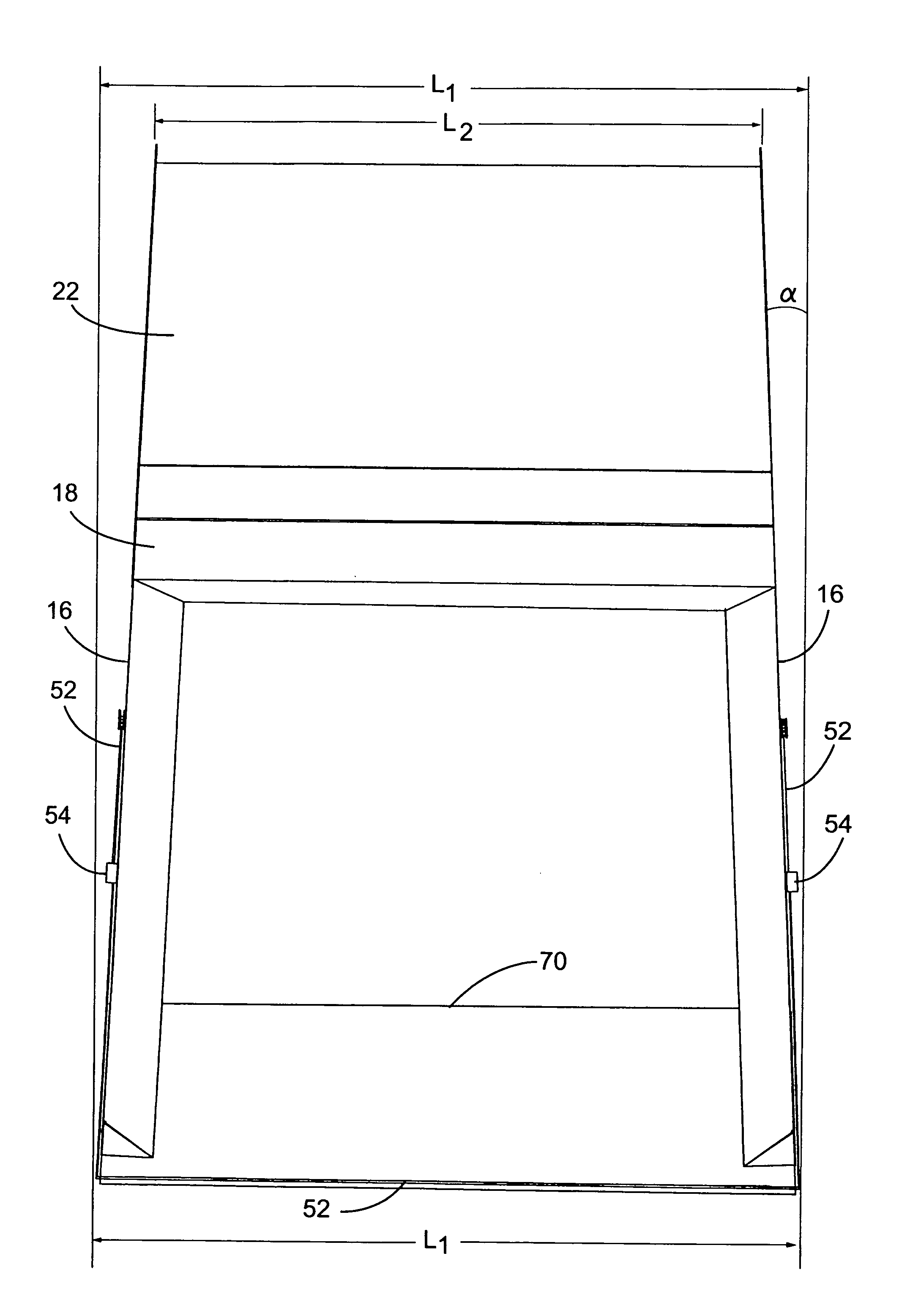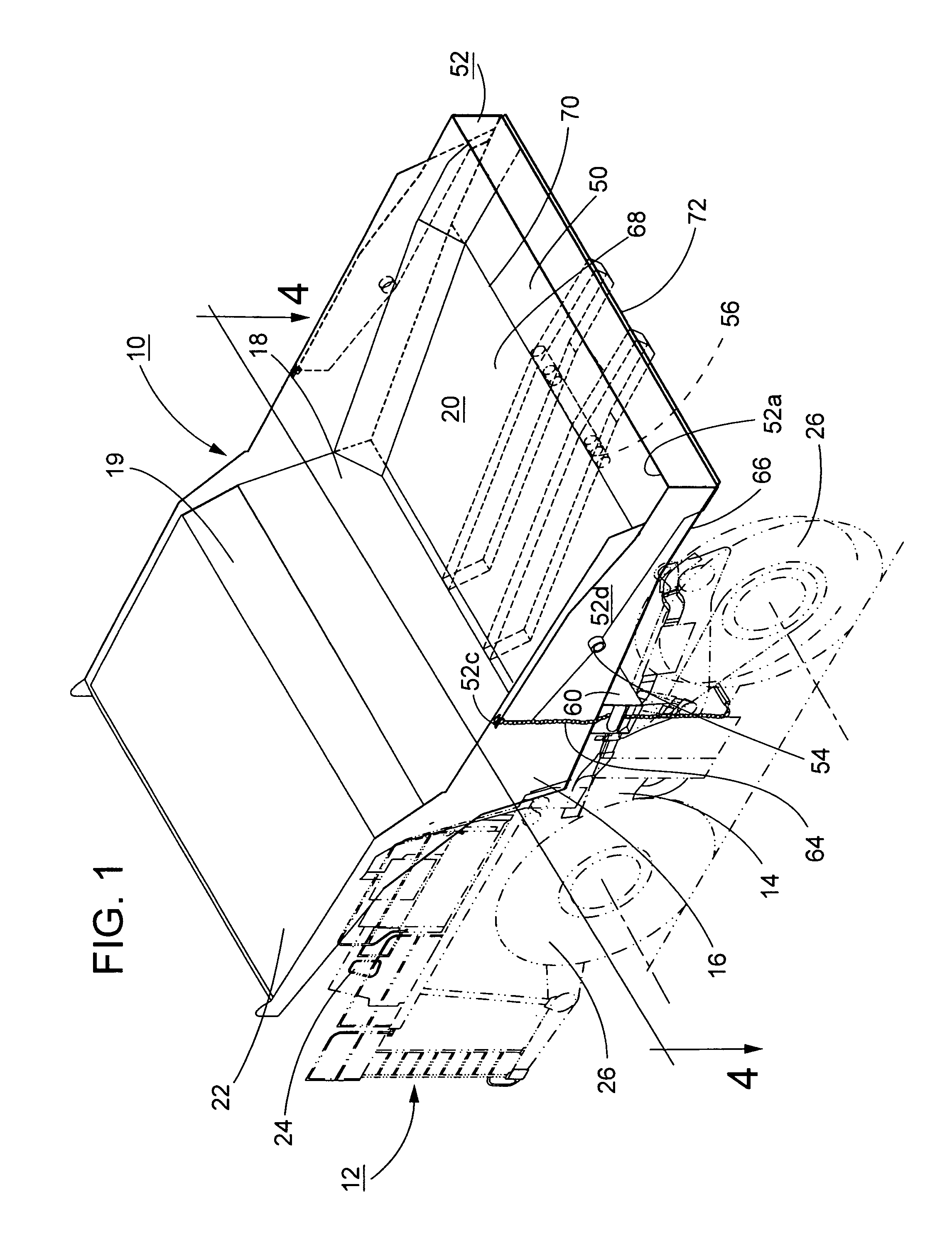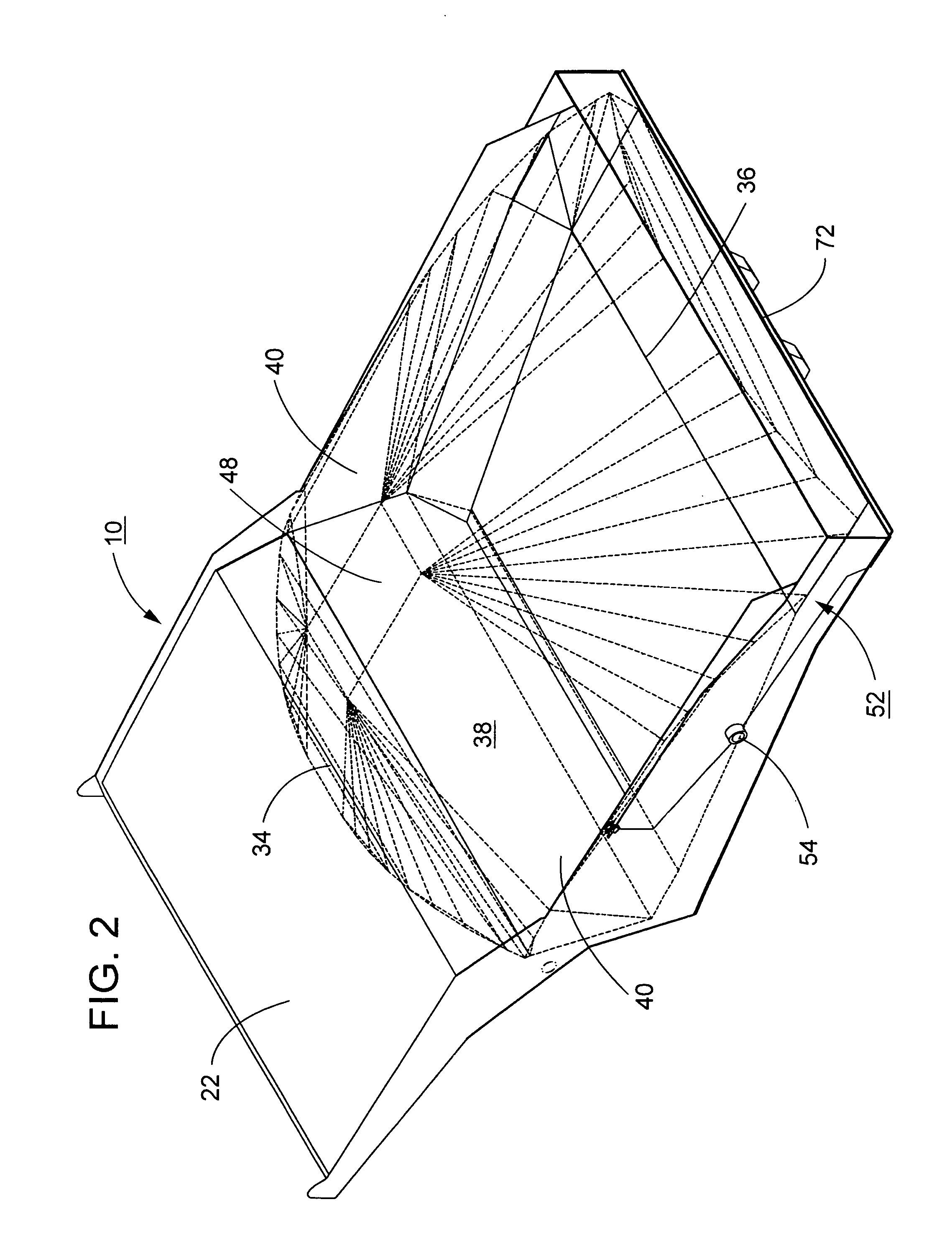Severe application off-highway truck body
a truck body and severe technology, applied in the direction of transportation and packaging, loading/unloading vehicle arrangment, transportation items, etc., can solve the problems of destroying the dump berm, reducing the abrasive wear on the floor, and only shortening the body floor length, so as to minimize the rearward area wear, the effect of reducing the amount of material spillag
- Summary
- Abstract
- Description
- Claims
- Application Information
AI Technical Summary
Benefits of technology
Problems solved by technology
Method used
Image
Examples
Embodiment Construction
[0022]Referring now more particularly to the drawings there is shown in FIGS. 1-5 a dump body 10 for a heavy-duty off-highway truck 12 whose general design is in keeping with the three-dimensional modeling of a load for the body and the dimensioning of the body to accommodate that load as described in co-pending U.S. patent application Ser. No. 09 / 593,647, filed Jun. 13, 2000 and U.S. patent application Ser. No. 09 / 333,379, filed Jun. 15, 1999. Both of these applications have been incorporated by reference into this application for everything they describe.
[0023]The truck 12 includes a chassis 14 to which the dump body 10 is attached for pivotal movement about an axis 56 between a lowered position for receiving and transporting a load of material (FIGS. 1 and 3) and a raised position for dumping a load of material (FIG. 5). As shown in FIG. 1, the dump body 10 is generally constructed of steel panels that define the shape of the dump body and beams that form the structural framework...
PUM
 Login to View More
Login to View More Abstract
Description
Claims
Application Information
 Login to View More
Login to View More - R&D
- Intellectual Property
- Life Sciences
- Materials
- Tech Scout
- Unparalleled Data Quality
- Higher Quality Content
- 60% Fewer Hallucinations
Browse by: Latest US Patents, China's latest patents, Technical Efficacy Thesaurus, Application Domain, Technology Topic, Popular Technical Reports.
© 2025 PatSnap. All rights reserved.Legal|Privacy policy|Modern Slavery Act Transparency Statement|Sitemap|About US| Contact US: help@patsnap.com



